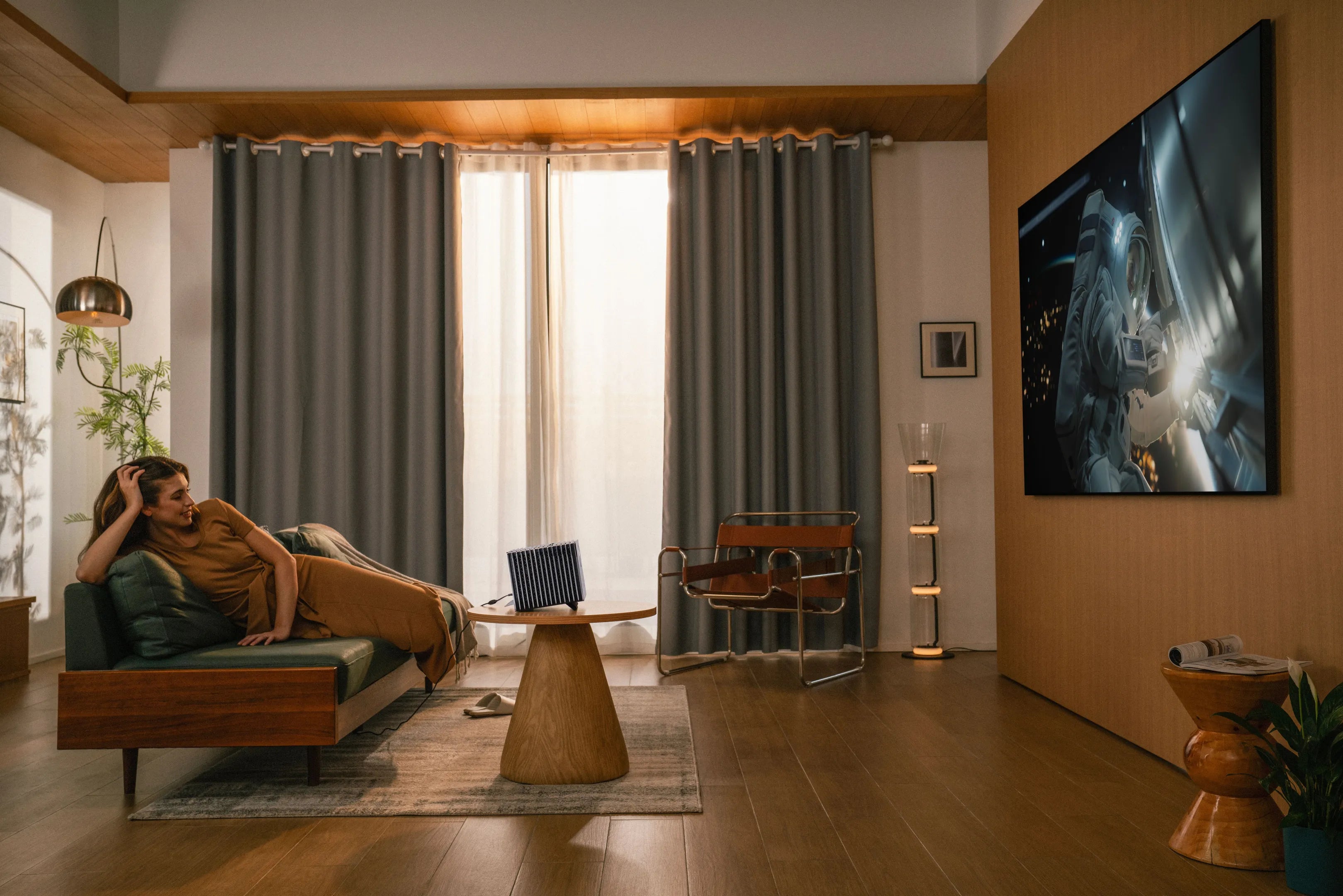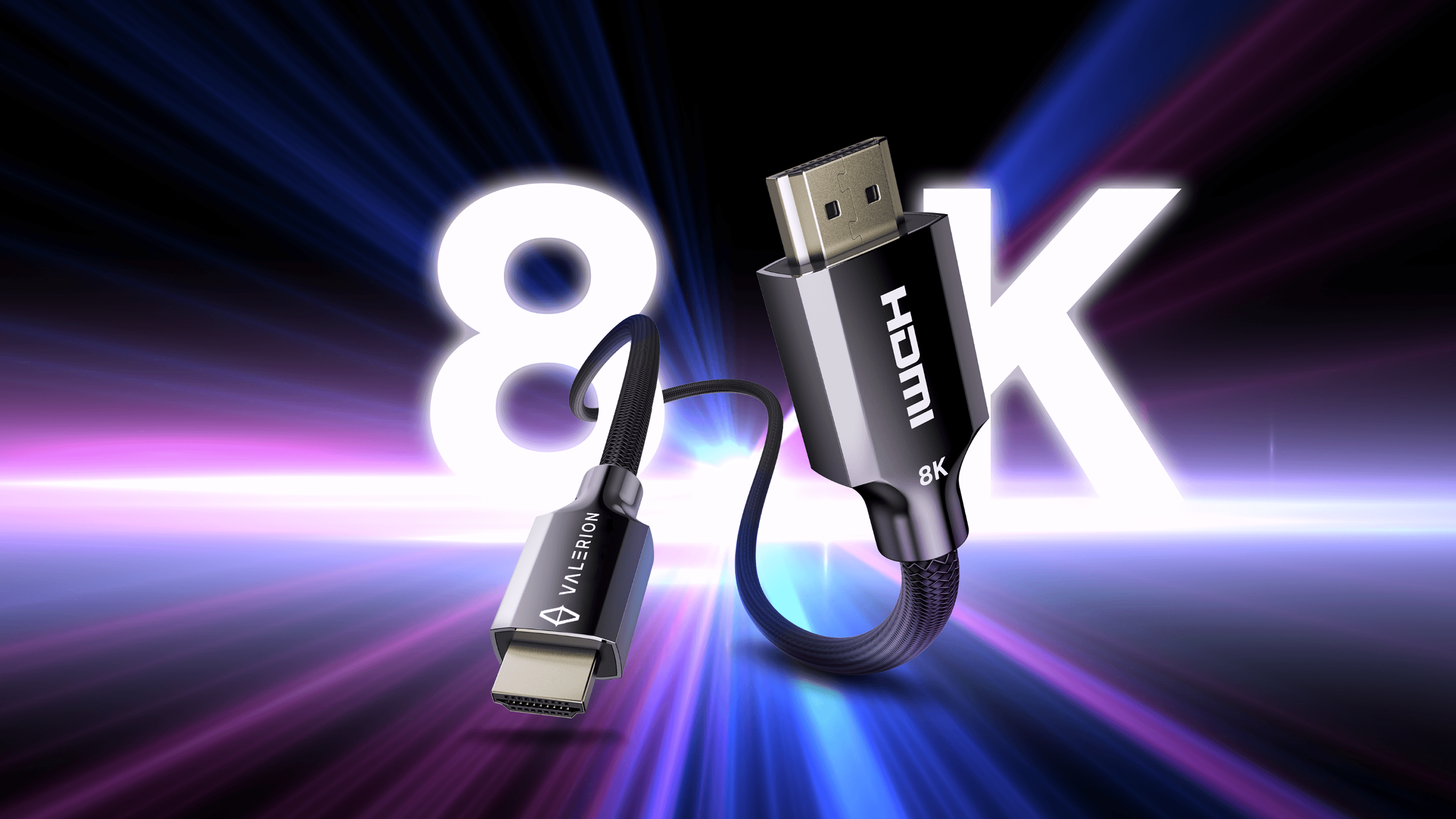The success of your home theater setup hinges on the projector throw ratio, a critical measurement that determines the optimal distance between your projector and screen to achieve your desired image size.
Understanding the throw ratio transformed my approach to projector installations. This simple calculation shapes your entire room setup. Short-throw projectors can create a 100-inch image from just 5 feet away, making them ideal for compact spaces. Meanwhile, ultra-short-throw models work from 0 to 4 feet, eliminating shadows and glare. Standard-throw projectors typically require 8-12 feet to achieve the same image size, suitable for medium-sized rooms, while long-throw projectors, needing 12 feet or more, are better for larger spaces like auditoriums or home theaters with ample distance.
This guide explains how to calculate the throw ratio, why it matters, and insider tips for optimizing projector placement in various rooms.
Throw Ratio Formula: D / W Explained
The throw ratio is the foundation of projector setup, calculated by dividing the distance from the projector lens to the screen (D) by the projected image width (W):
Throw Ratio (R) = Distance (D) ÷ Width (W)
This dimensionless ratio (units cancel out) provides practical insights. For instance, a projector 10 feet from a 5-foot-wide screen has a throw ratio of 2 (10 ÷ 5 = 2). You can rearrange the formula to solve for different variables:
- To find distance: D = W × R
- To find width: W = D ÷ R
For example, the Valerion StreamMaster Plus2, with its 1.2:1 throw ratio, projects a 100-inch-wide image (8.3 feet) and requires 10 feet of distance (1.2 × 8.3). Manufacturers express the throw ratio as a single number or range (e.g., 1.2:1), where the “1” represents one unit of screen width. Most standard projectors have a throw ratio of around 2.0, requiring twice the distance of the image width. The StreamMaster Plus2’s fixed 1.2:1 ratio simplifies placement in medium-sized rooms, delivering vibrant 4K visuals with 2000 ISO lumens and a 110% Rec.2020 color gamut for stunning color accuracy.
What is Throw Distance in Projector Setup?
Throw distance is the space between your projector and screen, directly affecting image size and clarity. Moving the projector farther from the screen enlarges the image, but each model has an optimal distance range for sharp, bright visuals. Specs often list throw distance as “screen size @ distance” (e.g., “100’ @ 8.2ft” means a 100-inch image at 8.2 feet).
Throw distance ties to throw ratio via the formula Distance = Throw Ratio × Image Width. Incorrect distances can result in dim or blurry images, so matching your projector’s throw ratio to your room’s constraints is crucial.
Types of Projectors and Their Throw Ratios
Projectors are categorized by throw ratio, each suited to specific spaces:
- Standard Throw (Long Throw): With throw ratios above 1.5:1, these require 8-10 feet for a 100-inch image. They’re versatile but may cast shadows if objects cross the light path. Ceiling mounting is standard in larger rooms.
- Short Throw: With throw ratios of 0.4:1 to 1.0:1, these produce a 100-inch image from 3-4 feet, reducing shadows and glare. Their “fish eye” lenses require flat, tensioned screens to avoid distortion.
- Ultra-Short Throw (UST): With throw ratios below 0.4:1, UST projectors create a 100-inch image from 3-20 inches away using reflector lenses. They’re ideal for tight spaces, compatible with CLR (Ceiling Light Rejecting) screens, but are pricier.
Most projectors include zoom lenses, offering a throw ratio range (e.g., 1.2:1 to 1.5:1) for placement flexibility. Zoom settings impact brightness, with more lumens available at wide-angle settings than at telephoto, which affects choices such as ceiling vs. shelf mounting.
How Throw Ratio Affects Image Size
The throw ratio determines image size based on projector distance. A higher throw ratio requires more distance for the same image width. For example, a projector with a 2.0 throw ratio needs twice the distance of a 1.0 ratio for the exact image size. In a room with 12 feet of throw distance and a 1.2:1 throw ratio, the maximum image width is 10 feet (12 ÷ 1.2).
Using a projector outside its optimal throw ratio range can cause pixelation, blurriness, or stretching. To avoid setup issues, calculate your screen size or projector placement early. For a fixed 15-foot distance and a throw ratio range of 1.8-2.22:1, your screen width can range from 6.76 to 8.33 feet.
How to Calculate Throw Ratio in Real Rooms
To apply the throw ratio, use one of two approaches based on your setup:
- Determine Projector Placement: Multiply the screen width by the throw ratio to find the ideal distance. For a 7-foot-wide screen and a 2.0-2.4:1 throw ratio, place the projector 14-16.8 feet away. Measure from the lens to the screen surface.
- Calculate Screen Size: For a fixed distance, divide the throw distance by the throw ratio. A projector 15 feet away with a 1.8-2.22:1 throw ratio requires a screen width of 6.76-8.33 feet.
Consider the room layout, furniture, and obstructions to avoid shadows or visual obstructions. In medium-sized spaces, standard-throw projectors are ideal, as they require a moderate distance (e.g., a 1.2:1 ratio needs about 9-12 feet for a 100-inch image).
In smaller spaces, short-throw or UST projectors are ideal, as they require less distance (e.g., a 0.4:1 ratio needs only 3.3 feet for a 100-inch image).
THX and SMPTE Guidelines for Home Theater Setup
THX and SMPTE standards optimize projector placement for a cinematic experience. THX recommends a viewing distance of 1.34 inches per inch of diagonal screen size (e.g., 16.8 feet for a 150-inch screen) and a maximum 15-degree upward viewing angle. SMPTE recommends a 30-degree viewing angle for 16:9 screens, whereas THX prefers a 36-degree angle. A 45-50-degree “sweet spot” aligns with CEDIA’s 43-degree recommendation for 2.4:1 content. Viewer eyes should be positioned one-third to one-sixth of the screen height for optimal comfort.
Personal preference matters—choose a viewing angle (36-60 degrees) based on your favorite cinema experience to guide the throw ratio and screen decisions.
Conclusion
The projector throw ratio is the key to a stellar home theater, as it determines whether your projector fits your space. The D/W formula lets you calculate precise projector placement or screen size. Choose between standard (8-10 feet), short-throw (3-4 feet), or ultra-short-throw (inches away) projectors based on room size, noting that zoom lenses affect brightness. THX and SMPTE guidelines (36-45-degree viewing angles) ensure cinematic quality.
Measure your room and calculate the throw ratio before buying to avoid costly mistakes. While professional standards guide setup, tailor your choices to your viewing habits. The innovative features and vibrant visuals from Valerion make it a top choice for an immersive home theater experience, empowering you to make informed decisions beyond the recommendations of an installer.






